Coping with Seasonal Affective Disorder: Self-Care During Seasonal Changes
Do you notice your mood goes down when the weather gets colder? Have you ever been told that you were too “sensitive” to feel that way? The truth is, many people (three million people in the U.S.!) experience seasonal affective disorder (SAD). So, it is no joke.
What is Seasonal Affective Disorder?
With the decrease of sunlight, your biological clock (circadian rhythm) is disrupted, your serotonin level drops, and your body’s melatonin level also drops. All of that can affect your mood. If you already have family members who experience SAD or if you already suffer from major depression or bipolar disorder, then you could have a higher chance of experiencing SAD.
Why Does Self-Care Work?
With SAD, one can easily get frustrated about the symptoms. It is understandable that when we think about how a depressive mood jeopardizes the quality of our life, frustration could be the immediate reaction. However, stress will snowball if we use one negative emotion (frustration) to respond to another negative emotion (depression). When we are stressed, we are less likely to come up with healthy ways to cope with the problem.
All emotions are helpful in terms of letting us know what we need and what we value. In that sense, I would even say that the unwanted emotions are more helpful because they reveal needs that are not met for long. Unwanted emotions send out calls for attention. If this time of seasonal change is tough for you, that means your mind is sending you a message: take better care of me!
What Self-Care Activities Can Help with S.A.D.?
To cope with SAD, there are many things that you can do for self-care.
Spend more time outside and embrace the sunlight.
Decorate a cozy home with things that give you a sense of love and warmth.
Put on your favorite sweater and jacket.
Enjoy the colorful harvest in the countryside.
Spend time with family and friends.
Use a light therapy lamp to compensate for the decrease of sunlight.
Put some thoughts in celebration of holidays so that you can genuinely enjoy the time.
Self-care works only when you are doing it with a sense of care. If you see self-care as a duty, a burden, another task to be done so that you can check the box, then the effect of self-care will certainly be compromised.
I still remember the first fall I spent with my partner. He told me ahead of time that his SAD begins from the moment when the sunlight dims. I then told him that my SAD begins from the moment when my cheeks feel the first chilling wind. There was some comfort in sharing unique experiences with SAD. In that sense, being sensitive also gives people an opportunity to connect with each other and share comfort – light is dim and wind is cold, but inside, we can still create a bright and warm world.
-
How to Create a Sensory Tool Kit
Quick Everyday Mindfulness Activities
Simple Coping Strategies from 5 Baltimore Area Counselors
The Power of Softness: A Lesson from Tai Chi on Mood Regulation
"What’s Wrong With Me? How Do I Cope?" Being a Highly-Sensitive Person
Four Free Apps That Offer Quick Mindfulness Activities and Meditations
Search Our Other Blogs!
Interested in Counseling for Anxiety, Depression, and/or Mood Regulation?
If you’re a Marylander who knows that counseling is the direction you need to take, the therapists at LifeSpring Counseling Services are here to help. We offer online counseling services for mindfulness, depression, anxiety, trauma, and grief and loss. We also offer Brainspotting as a specialized service, and Brainspotting can be done online, too!
Here’s how you can get started! Online counseling for anxiety, depression, and mood regulation aren’t the only services offered at our Maryland office
The counselors and social workers at our Maryland office also offer counseling services for trauma, grief and loss, boundary setting, communication skills, and difficult life transitions. We also offer specialized counseling services including Brainspotting and spiritually-integrated counseling. Because we are located next to several local universities, we also work with college students and international students.
Written by: Si Meng, LGPC
Si is a licensed therapist at LifeSpring Counseling Services in Maryland who specializes in trauma, depression, anxiety, life transitions, and mood disorders. She offers multicultural and bilingual services in both English and Mandarin.
Date of photo download: 10/13/2022


